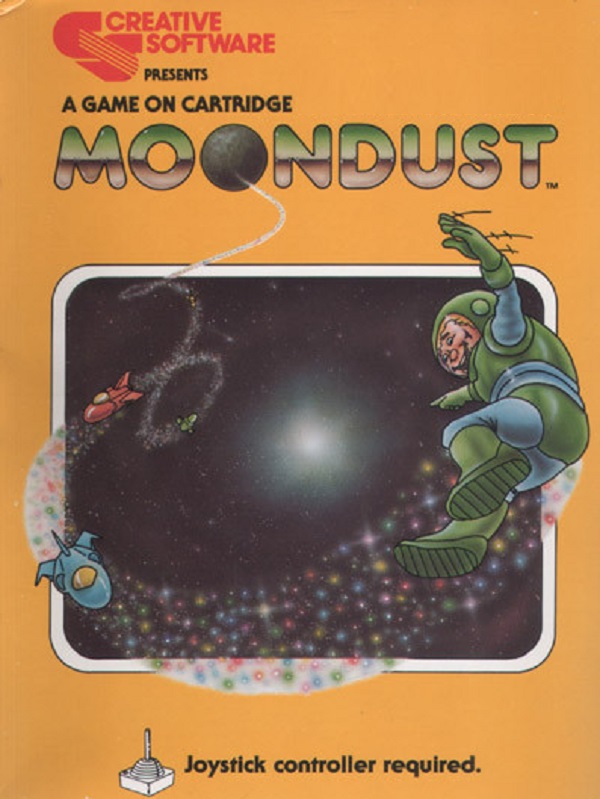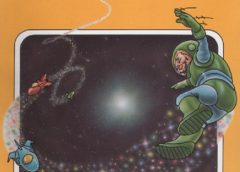
At the height of the video-game craze in 1983, Lanier created a popular game called Moondust for Atari. The success of the game and the royalties it generated gave lanier the freedom to pursue the silicon Vally ethos of being an entrepreneur. A year later, VPL Research was officially founded and Scott Fisher from NASA came rocking. Sadly conservative companies had difficulty accepting Lanier’s unorthodox appearance and radical image which was a big problem if you’re trying to sell a $260,000 glove.
So the team then re-engineered the glove to improve its accuracy and usefulness. Fibre optics for sensing finger flex and a Polhemus sensor for measuring position and orientation of the hand were added. The glove and its supporting software slowly evolved into a working, sellable product.

After selling the glove to NASA in 1986, VPL continued work on creating software tools for producing virtual worlds much like the ones developed at NASA. Up to this point, VPL was only a supplier of the wired glove. It would be several years after NASA’s unveiling of the VIVED system that VPL would begin marketing virtual reality tools of their own. In fact, it was thanks to their work with NASA that VPL could start to put it all together and market a useable, all-in-one VR system (we are not talking Oculus Quest here) for the first time ever.
VPL entered the business of selling complete solutions for virtual reality in 1988. In fact, Lanier is credited with coining the popular term for these synthetic experiences (virtual reality). To sell a system for immersive experiences, you need display devices (sight and sound), graphics hardware, interaction devices, and software to make everything run.

For display devices, VPL developed an HMD similar to NASA’s for visual display and then integrated Scott Foster’s Convolvotron 3-D sound processor for an aural display. VPL’s DataGlove served as a general-purpose interaction device. By combining all this with Apple’s Macintosh computer and two Silicon Graphic’s workstations, VPL created RB2, or Reality Built for Two, the first commercial VR system. This new form of reality wasn’t cheap; it cost $225,000 for a single user or $430,000 for two.
VPL began a booming business in selling DataGloves and EyePhones to researchers cobbling together their own systems. Within several years, hundreds of both devices were spread all over the world in garages and labs. By 1990, VPL claimed 500 customers worldwide. Customers for VPL’s RB2 system included premier labs in Japan, Europe, and the U.S. that were tackling problems in human-factor simulation and visualization.
In the meanwhile interesting software tools were also evolved to support creating virtual environments. Young Harvill came up with Swivel 3-D as a tool for creating or modelling 3-D worlds and objects. It has since become one of the most popular 3-D modelling packages for the Macintosh and generates a continuous stream of revenue for VPL. In addition to Swivel 3-D, Chuck Blanchard designed Body Electric to control the dynamics of the virtual environment. Information from Swivel and Body Electric passed to a rendering program called Isaac, which drew the final images. Swivel and Body Electric ran on a Macintosh while Isaac ran on the Silicon Graphics workstations. It was so complex that one demo allowed you to peel a virtual banana!
One of the more important concepts demonstrated by VPL was the ability of two people to enter into the same virtual environment and interact. Yes, the worlds very first multiplayer VR experience was born. It involved two people represented as lobsters in the virtual world. Climbing into a full-body version of the DataGlove called a DataSuit brought their entire body into the simulation instead of just their hand. They could choose how their bodies were represented from a collection of stored parts-lobsters were one of the choices on the menu.
The two systems were networked together, each running the same simulation. Any change in the state of one simulation would be communicated to the other system. If one participant moved his clawed hand, the other person would see the movement. VPL proved that virtual reality didn’t have to be an individual experience, that it could be shared.
As VPL enters its seventh year of operation, it has grown to about 25 people and is still enjoying a comfortable lead over the rest of the nascent VR industry. However, after years of being the sole supplier of virtual reality hardware and systems, it has had to adjust to new competition from start-ups offering similar wares.

As a worldwide recession limits funds for $50,000 HMDs and $225,000 systems, VPL is undergoing change. Recognizing the demand for less expensive solutions, VPL now offers a less expensive system based on a Macintosh Quadra and two Division 1860 microprocessor-based graphics boards. Shown at the 1992 MacWorld convention in San Francisco, Microcosm is a low-cost system intended for the architectural market. Attempting to reestablish a technological edge. VPL also brought forth new gloves and new head-mounted designs.
Before VPL emerged on the scene, VR was the province of obscure research projects at universities and labs in the US. While it was NASA who had proven it could be done it was down to VPL who really got the technology out there ( even though VPL actually had little to do with inventing it). The truth is without VPL this website and indeed Oculus simply wouldn’t exist. But it wasn’t VPL that turned it into a gaming machine, that right of passage was down to a very talented woman called Pat Gelband.


